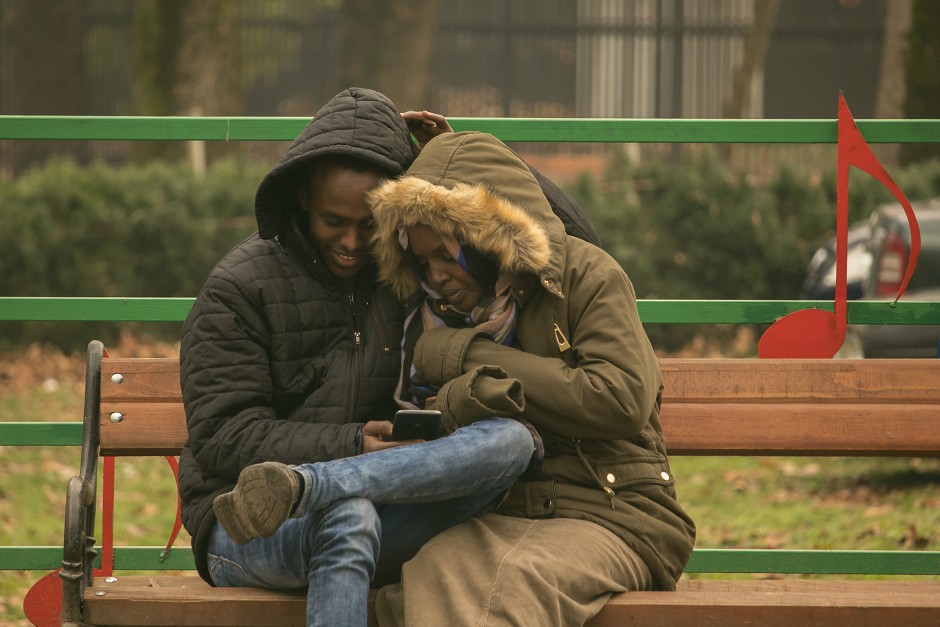BOSNIA-HERZEGOVINA
She works as a teacher, but photography has always been Lejla Samardzic’s passion. Since migrants arriving into Croatia and Northern Europe have been passing in front of her home, she took her camera and started capturing faces and stories. To show that “we must not be afraid”

She is known as “the migrants’ photographer”, but Lejla Samardzic works as a teacher in Bihac, the Bosnian city at the border with Croatia where thousands of stranded people are hoping to cross the border into Croatia. Leila’s pictures, titled “the time of migrants” have thousands of followers on Twitter and her profile is very popular among all those interested in learning more about the future of the Western Balkan region.
High numbers of people. Many migrants walk past Lejla’s home. A teacher with a great passion for photography, she often takes walks in the park and photographs whatever crosses her way, local inhabitants, nature that marks the changing seasons, animals. But in the last months, in Bihac, migrants are stationed in the streets, public park benches, train stations, in the lake with the ducks. According to official figures, since the beginning of the year over 23 thousand asylum-seekers have entered Bosnia-Herzegovina through the route that until recently was defined the “Balkan route.”
“We have forgotten…” “When refugees started arriving I thought I had to do something – the photographer told SIR -; I wanted to keep alive the memory of this moment, for me and for others.” Thinking back, Samardzic recalls the first arrivals of migrants in her city: “The citizens of Bihac made every effort to offer a helping hand and several humanitarian initiatives were created, but as the wave of migrants increased, media reports on the migrant population began to spread, not all of which were true.” So people started to feel afraid: “ Ours is a small community – she remarked – and people don’t feel safe, they seemed to forget that the newcomers were first of all human beings.”
Good words and respect. Lejla has met hundreds of migrants over the past months. “Among them there are people with different stories and experiences: those learned and those without an education, the good and the bad”, she said. For her, migrants are people like everyone else. It became clear to her as she listened to their stories, to the factors that forced them to undertake this dangerous, unpredictable journey in search of a better life. The greatest risk that migrants are exposed to “is being placed under a common denominator that leads to generalized conclusions and serious accusations.” Lejla’s first-hand experience demonstrated that the opposite is true: “I perceived great kindness, good words and feelings of respect for the local people.”
Images of daily life. Having realized that the image of refugees given by a large part of the media was “distorted”, Samardzic decided to “highlight the positive examples through pictures: the migrant child accompanying an old lady to help her cross the street or feeding the ducks in the lake, (while some news reports affirmed that migrants would kill the birds), or refugees sleeping on a bench in the park.”
The threat of low temperatures. In the meantime in Bosnia-Herzegovina it’s already snowing and Lejla’s most recent photos are set against a natural white setting. “In Bihac the temperatures can drop below zero and it’s dangerous for the migrant population without warm housing facilities and thermal garments to protect them against the cold.” Lejla’s pictures depict children still wearing slippers and light jackets. “Hopefully – she said – humanitarian organizations will take care of them.” Even those who continue trying to cross the border are exposed to this risk. “In the past days we received news of migrants rescued from freezing weather in the forest.”
“Love wins over everything.” Lejla’s favourite photograph depicts a young migrant couple. She writes in the caption: “Hugging each other, sitting on the bench in the park, smiling. Despite the weather and the people, in spite of all difficulties, their smiles show us that love is the most powerful weapon. It shows that ultimately love wins over everything, including walls of misunderstanding and hate.” It’s the message that Lejla Samardzic wants to transmit with her pictures that encompass short stories of personal encounters. “Prejudices – she said – stem from fear that generates hatred.” The photographer’s experience carries a recommendation: “To see migrants as people just like us, not as strangers. Sometimes – she concludes – a good word or a smile is enough, it means a lot to them and it brings happiness also onto us.”